#urbanismo
Text
This is an excellent article on a sad topic: pedestrian deaths are rising.
QUOTE:
"Nationwide, the suburbanization of poverty in the 21st century has meant that more lower-income Americans who rely on shift work or public transit have moved to communities built around the deadliest kinds of roads: those with multiple lanes and higher speed limits but few crosswalks or sidewalks. The rise in pedestrian fatalities has been most pronounced on these arterials, which can combine highway speeds with the cross traffic of more local roads."
In the suburbs of Atlanta (and other metros) and in the city, these wide arterial roads are deadly for walking. Meanwhile, the most walkable places in the city are increasingly unaffordable.
It's obvious that we need a massive shift on a huge scale when it comes to the walkability of our built environments, and in the equitability of access to pedestrian safety.
It will take many steps, big and small, in our policies and investments in order to get there. Some of those small steps will need to happen on your street, and in your neighborhood. Please support them and please speak up when others don't.
#urbanism#urban planning#city planning#urban design#walkable cities#pedestrian deaths#pedestrian safety#urbanismo#urbanisme
127 notes
·
View notes
Text
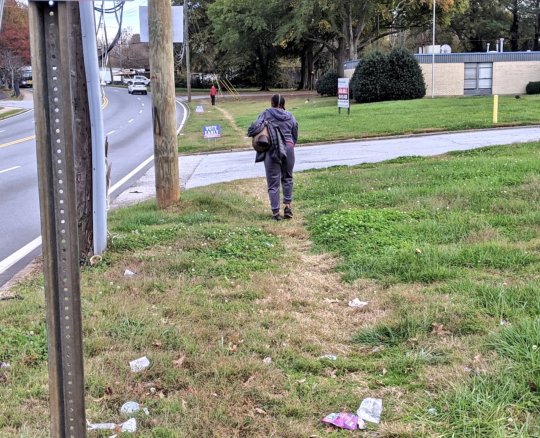
Classism. Racism. Ageism. Ableism. Climate denial.
No matter how we rationalize the wasteful destruction of nature through car-scaled urban sprawl, or how we rationalize the act of robbing people of chances to live with dignity unless they can drive, those evils are at the core.
#atlanta#urbanism#pedestrian safety#walkability#urban planning#urban design#car-centric developmnent#urban sprawl#suburban sprawl#sprawl#urban development#urbanismo#urbanisme
74 notes
·
View notes
Photo

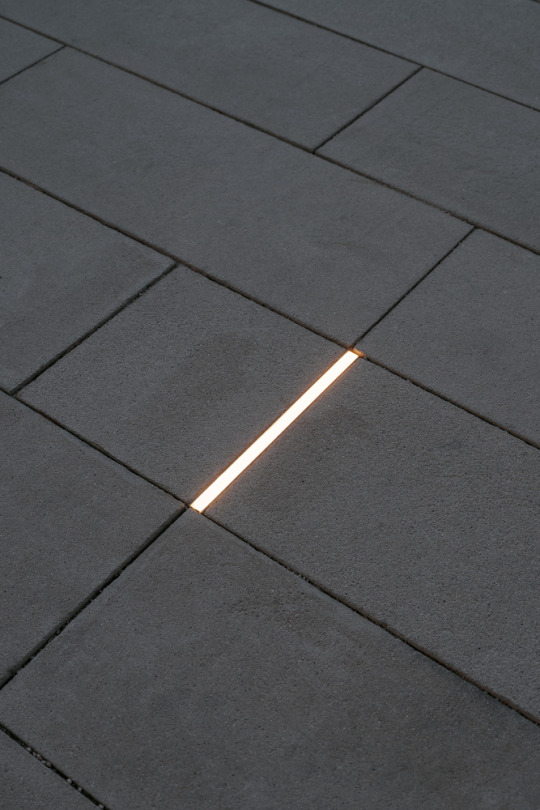
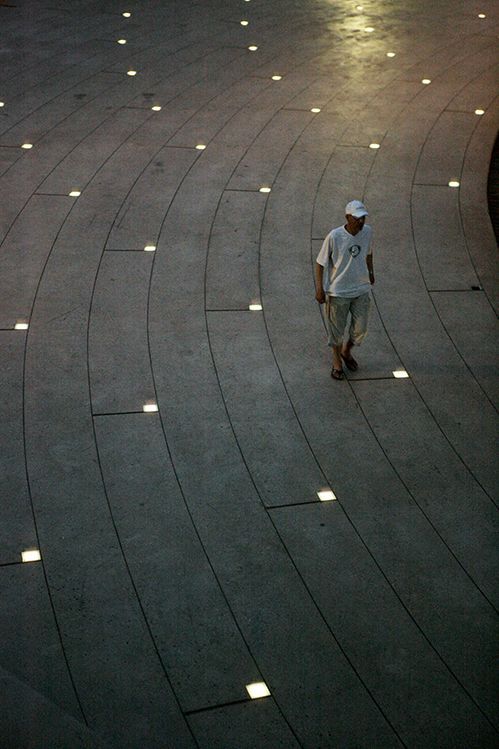

Las luces urbanas pueden ser normales o maravillosas.
18 notes
·
View notes
Text
Vez por outra, indo devolver um filme na locadora ou almoçar no árabe da rua de baixo, dobro uma esquina e tomo um susto. Ué, cadê o quarteirão que estava aqui?! Onde na véspera havia casinhas germinadas, roseiras cuidadas por velhotas e janelas de adolescentes, cheias de adesivos, há apenas uma imensa cratera, cercada por tapumes.
Fecho os olhos, abro de novo, penso se não seria o flashback de um ácido tomado nos anos 60. Lembro-me que então eu não existia nos anos 60 e, portanto, aquilo é exatamente o que parece: uma imensa cratera, cercada por tapumes. As janelas, as roseiras, as casinhas, tudo foi levado em caçambas de entulho — as velhotas e os adolescentes, espero, conseguiram escapar.
Em breve, do buraco brotará um prédio, com grandes garagens e minúsculas varandas, e será batizado de Arizona Hills, ou Maison Lacroix, ou Plaza de Marbella, e isso me entristece. Não só porque ficará mais feio no meu caminho até a locadora, ou até o árabe na rua de baixo, mas porque é meu bairro que morre, devagarzinho.
Os bairros, como os homens, também têm um espírito. Uma espécie de chorume transcendental que escorre pelo meio-fio, soma de suas construções e seus personagens, sua história e sua paisagem. Perdizes é o bairro da PUC e de palmeirenses que gritam pela janela a cada gol, ensandecidos, de poetas concretos e de deliverys que vendem pizza de muzzarela mais barata a cada ano que passa, é o bairro do TUCA e do Tom Zé — que, dizem, é o jardineiro do prédio onde mora.
Da mesa do árabe em que almoço, vejo estudantes de moda da Santa Marcelina, de cabelo azul, esperando para atravessar a rua, ao lado de freirinhas que cursam pós em teologia na PUC; vejo meninos e meninas de uniforme escolar mascando chicletes, ouvindo iPod e provocando uns aos outros, daquele jeito que meninos e meninas se provocam, um segundo antes de nascerem peitos e barba; vejo um cara que vende cocada, vindo diretamente do século XIX, batendo a sua matraca. No ponto da Cardoso tem o Adão, taxista que conhece não só todas as árvores frutíferas da cidade como ainda sabe em que época cada uma delas dá seus frutos.
Às vezes, no fim da tarde, quando ouço o sino da igreja da Caiubi badalar seis vezes, quase acredito que estou numa cidade do interior. Aí saio para devolver os vídeos, olho para o lado, percebo que o quarteirão desapareceu e me dou conta de que estou em São Paulo, e que eu mesmo tenho minha cota de responsabilidade: moro no segundo andar de um prédio. É um prédio velho, tem o simpático nome de Maria Alice, mas e daí? Ali embaixo, onde agora fica a garagem, já houve uma cratera, e antes dela o jardim de uma velhota e a janela de um adolescente, cheia de adesivos.
Antonio Prata – Meio Intelectual, Meio de Esquerda in “Perdizes”
#antonio prata#crônica#literatura brasileira#meio intelectual meio de esquerda#são paulo#perdizes#urbanismo#bairros
7 notes
·
View notes
Text

Bora começar as atividades?
Estamos em uma obra no Aristocrata, fazendo a parte de drywall, elétrica e pintura. Hoje é nosso 3° dia na obra, dia de finalizar a elétrica e fechar a estrutura de drywall que já fizemos. Bora?! Aqui estamos a todo vapor!
#decor#drywall installation#interiors#home#urban#arquitectura#arquitetura#urbanismo#drywall#drywaller#construçãocivil#construção#eletrica#eletricidade#pintura
2 notes
·
View notes
Text
Abro hilo de cómo sería mi ciudad ideal.
#arqui#arquitectura#historia#historiaarqui#arquitecturelovers#arquitecturephotography#arquiteturadesign#renacimiento#ciudad#city#ideal#urbanismo
5 notes
·
View notes
Text

A estátua do Cristo Redentor sendo construída no pico do Corcovado na Floresta da Tijuca, Rio de Janeiro, 12 de Dezembro de 1931.
108 notes
·
View notes
Text

Sal quizá suceda algo
#DV#Pasando el momento#Calles#ciudad#urbanismo#pies#Deriva urbana#libros#Daniel Villarreal#situacionismo
22 notes
·
View notes
Text

Arthur von Schmalensee | Kvarteret Cephalus | Estocolmo, Suecia | 1942-1950
21 notes
·
View notes
Text
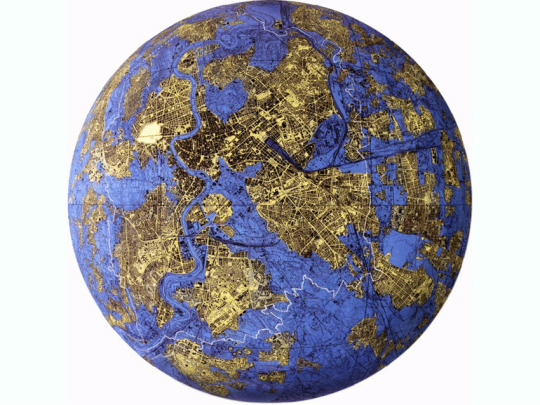
Planisferio de Roma. Stalker. Attraverso i territori attuali, Roma, 5-8 de octubre de 1995
5 notes
·
View notes
Text
Let's help Atlantans beat the high cost of car ownership by offering a better, more walkable future
by Darin Givens, 12/24/2023
This image shows part of the United Auto Recovery lot in Hapeville, just south of Atlanta (and this is only a section -- it goes on).
What you're looking at are repoed vehicles waiting for owners to pay lenders off and recover them.

To my eyes, it's also a picture of the need for affordable homes in transit-served density, where the expense of car ownership is less of a necessity and the threat of repossession is less present in peoples' lives.
The struggle of transportation costs is real, and it's getting worse every year.
According to a NY Times report, the average annual cost of new-car ownership rose to $12,182 this year due to increased "purchase prices, maintenance costs and finance charges." That's an incredible cost burden -- one that obviously hits lower-income drivers the hardest.
Too often, we demand car ownership by way of our unwalkable, sprawling urban designs which offer little alternative. We essentially enforce this burden.
Also from that NYT article:
"America’s dependence on automobiles means hefty bills, the risk of dangerous crashes and stress. And now, even with strong wage growth and elevated savings in recent years, high sticker prices and escalating interest rates are starting to take a toll: The share of borrowers moving into delinquency jumped sharply in late 2022 and early 2023"
When you read "borrowers moving into delinquency," understand that to also mean 'people who have little choice but struggle with car-ownership burdens because we aren't allowing them affordable homes in walkable neighborhoods rich with transit services'.
For a look at the savings we could allow residents in a less car-dependent, future version of Atlanta, take a look at this chart showing the difference between car ownership costs and annual transit-pass costs for the average Atlanta transit commuter (source: atltransit.ga.gov).

Of course, you have to multiply that cost of transit passes for each person in a house. But even if we can get to a level of walkability that allows two-car families to trim down to one car, that's a lot of savings.
We can do this. Bit by bit, we can use public tools like Invest Atlanta, and zoning reform, and the city's affordable housing fund, and the More MARTA program (and much more) to provide affordable homes in a compact, pedestrian-scaled setting that's easily served by transit routes.
It's crucial that we remain optimistic about our chances for success when it comes to creating a better Atlanta that lifts people out of the burdensome costs of car-centric places -- not just money, but also poor health outcomes and threats to safety.
So here's me, hoping for more hope in the the new year. Let's find it and cling to it in 2024, and make great strides in building better places. Don't get held down by the oppressive weight of car-dependent, inequitable, unsustainable built environments. Hold tight to a vision for change & progress.
13 notes
·
View notes
Text
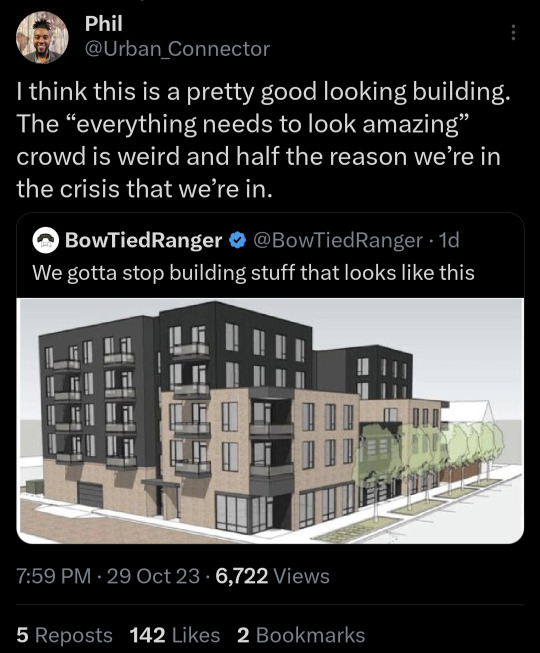
Agreed. There's nothing innately wrong with background buildings like this.
Anyone who spends a significant amount of time exploring city streets from the sidewalk level will know this to be true: The most important design feature of cities is the 'fabric' that's created by the combination of things, such as walkable streets (and other public spaces) + trees + the compact-footprint development of active-use buildings + a rich diversity of people, with a focus on equity.
I wonder if most of the people complaining about so-called "bland cookie-cutter buildings" are driving around in cars and expecting to be wowed by the city from their windshield perspective?
Maybe that's too cynical. But my point is that you can't appreciate the best details of urban design from a car seat. You have to get out and hit the sidewalk.
We need to look at the entirety of the built environment including street design, neighborhood design, local culture, small businesses, and diversity in order to identify the 'beauty' around us. I fear that people focus too specifically on the design of single buildings rather than the holistic urbanism of a place, which matters much more, IMO.
Link to tweet
17 notes
·
View notes
Video
Escadaria do Bixiga a Noite por João Otavio Dobre Ferreira
#Escadaria#escadão#Bixiga#BelaVista#BellaVista#escada#Escalera#Stairway#Centro#CenterCity#Arquitetura#Architecture#Urbanismo#Urbanstyle#Urbanlife#urbex#lifestyle#SãoPaulo#SP#PorLaCalle#PelasRuas#OnTheStreet#Photography#Photo#fotografia#Foto#FotografiaUrbana#FotoUrbana#Flickr#flickr
3 notes
·
View notes
Text
Modelado #BIM con #Revit y V-Ray
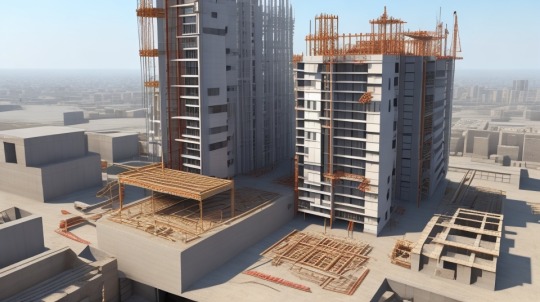
¿Qué es el BIM?
BIM, o Building Information Modeling, es una metodología de trabajo colaborativa que integra la generación y gestión de información digital en todas las etapas de vida de un proyecto de construcción. A diferencia de los métodos tradicionales basados en documentos 2D, el BIM permite crear y mantener un modelo virtual en 3D que contiene información detallada y precisa sobre cada elemento del edificio.
El modelo BIM no solo es una representación visual, sino que almacena una gran cantidad de datos relacionados, como las dimensiones, materiales, costos, plazos, secuencias de construcción y mucho más. Esto significa que todos los participantes del proyecto, desde arquitectos y ingenieros hasta contratistas y propietarios, pueden acceder a la misma información actualizada en tiempo real, facilitando la colaboración y la toma de decisiones informadas.
#bim#arquitectura#construccion#ingenieria#urbanismo#venezuela#barquisimeto#autodesk revit#diseño#modelado3D#modeladoBIM
3 notes
·
View notes
Photo

🏕 . . . . . . . . . . . . . . . . . . #lapazbolivia🇧🇴 #viajesinolvidables #travelphotography #abstract #instagood #style #geometrygrammer #geometric #pattern #urbanismo #design #tow #art #arts #treking #abstract #ınstagood #lookingup #lakeview #mountain #perspective #camping (en Laguna Jinchumurini) https://www.instagram.com/p/ClAiA3Htn8t/?igshid=NGJjMDIxMWI=
#lapazbolivia🇧🇴#viajesinolvidables#travelphotography#abstract#instagood#style#geometrygrammer#geometric#pattern#urbanismo#design#tow#art#arts#treking#ınstagood#lookingup#lakeview#mountain#perspective#camping
7 notes
·
View notes
Text

Cabo Branco, João Pessoa - PB
29 notes
·
View notes